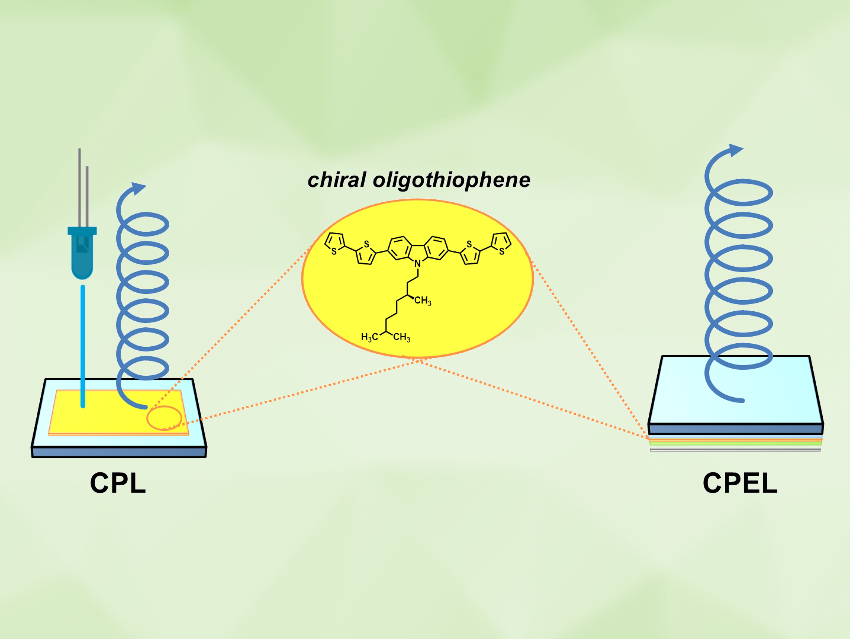Controlling the circular polarization (CP) of light is useful, e.g., for new types of organic light-emitting diodes (CP-OLEDs). Thin films of chiral π-conjugated organic molecules can be used to achieve the emission of left- and right-handed circularly polarized light in both photoluminescence (CPL) and electroluminescence (CPEL) applications. CPEL has been described in various classes of chiral π-conjugated systems, but no examples of CP-OLEDs based on chiral oligothiophenes had been reported so far.
Franco Cacialli, University College London, UK, Lorenzo Di Bari, University of Pisa, Italy, and colleagues have designed four different chiral 1,4-phenylene and 9H-carbazole-based oligothiophenes (pictured below on the left and right, respectively) with strong photoluminescence in the solid state. Thin films of the compounds were prepared by spin-coating them onto glass plates. The CPL spectra revealed strong signals across a wide range of wavelengths, mainly originating from the compounds’ chiral supramolecular architectures.
.jpg)
The team built a CP-OLED device based on chiral oligothiophene 4, which showed remarkable CPEL. According to the researchers, this is the first CP-OLED with an active layer made of a single small organic compound as a neat material—a very simple architecture compared to other recent CP-OLEDs.
- Chiral Oligothiophenes with Remarkable Circularly Polarized Luminescence and Electroluminescence in Thin Films,
Gianluigi Albano, Laura Antonella Aronica, Alessandro Minotto, Franco Cacialli, Lorenzo Di Bari,
Chem. Eur. J. 2020.
https://doi.org/10.1002/chem.202003547




